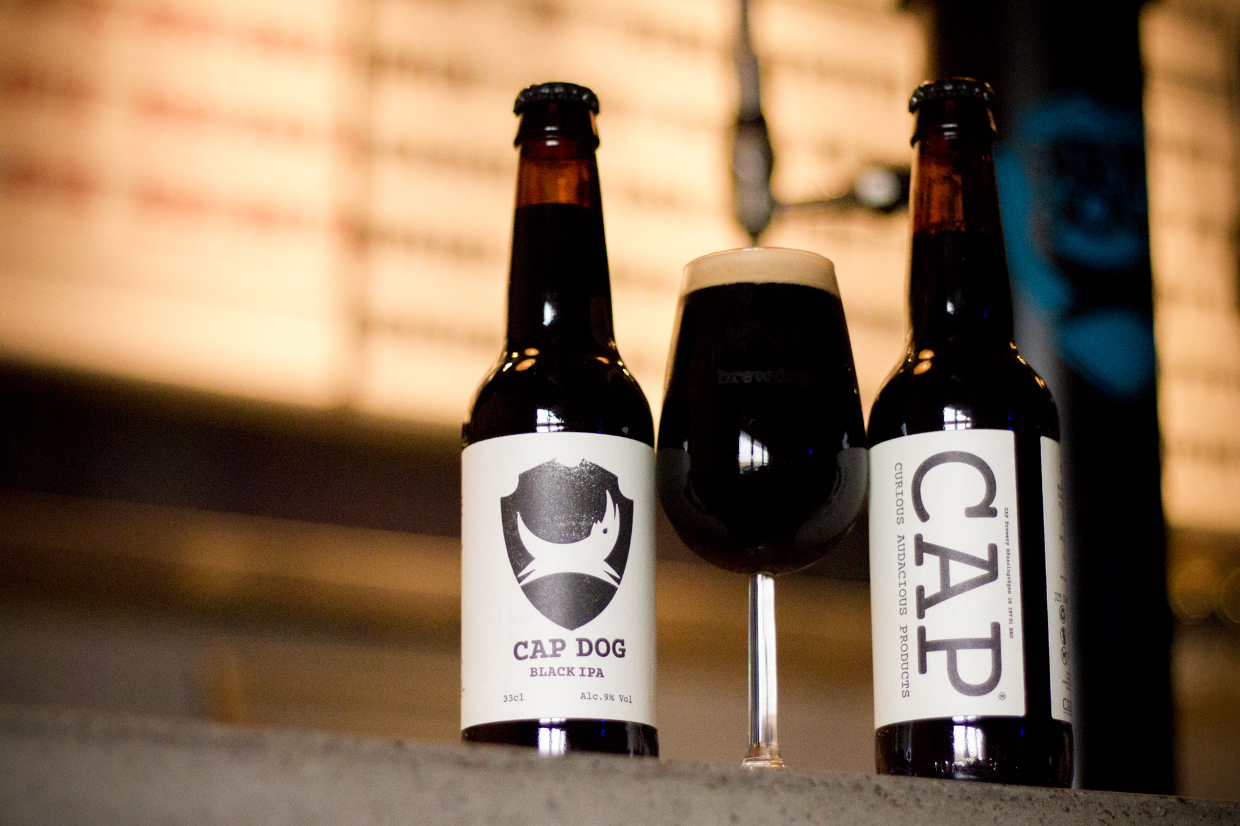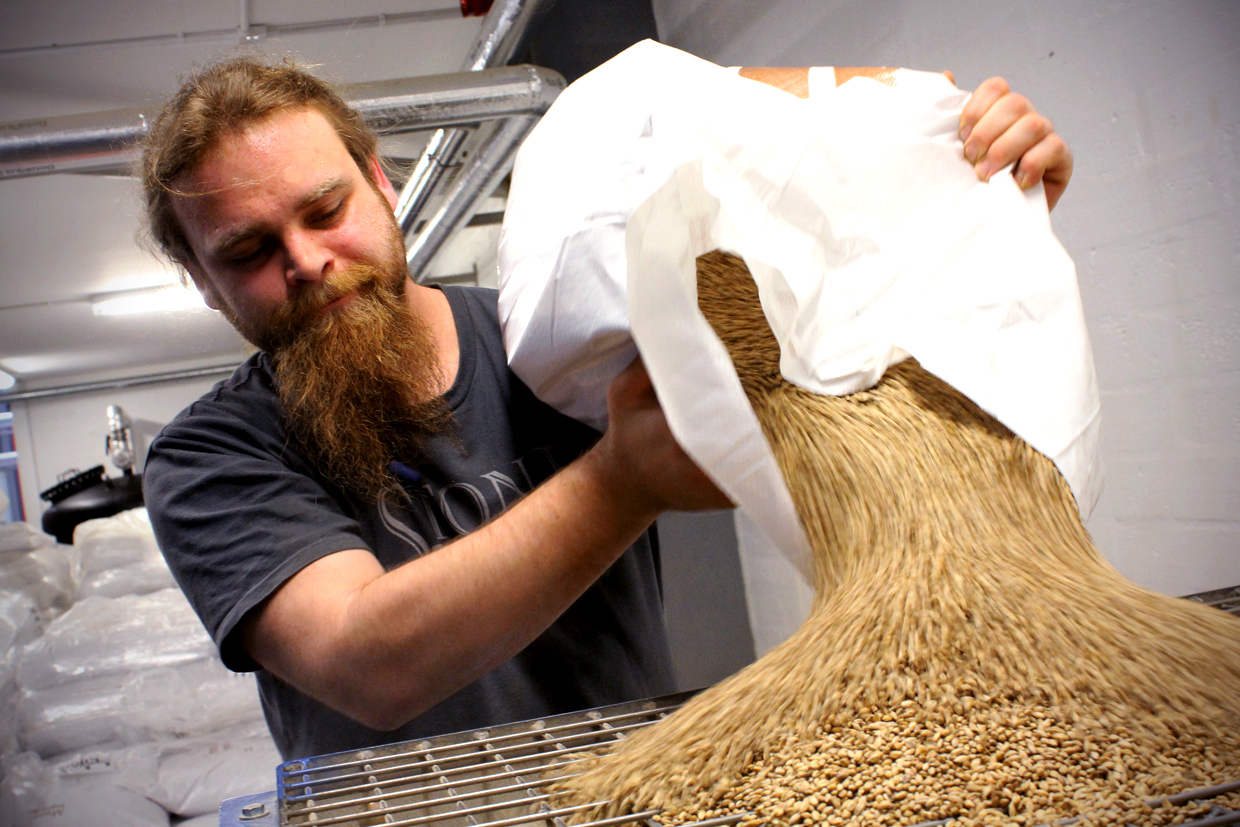MALT VAULT; RYE, OATS AND WHEAT

You can find out more about investing in BrewDog at www.brewdog.com/equityforpunks
It’s time to venture forth for one last time into the dusty depths of the Malt Vault! This series has looked at a few differing types over the years – Pale and Pilsen, Vienna and Munich, Roasted and Chocolate and most recently of all, those potent piledrivers of sweetness that are the Caramel malts. There are many more grains out there, of course, but we thought that before closing up the vault with the giant wheely thing on the steel door, a fitting conclusion would be to take a look at some of the alternative grains we use here at BrewDog. As usual, we’ve drafted in some expert help in the form of our masters of malt from our brewteam!

Rye
As a cereal grain, rye may look very similar to barley – they are closely related – but when used in beermaking its differences become highly apparent. It yields smaller grains than its cousin, and even though they have no hulls, they still need to be milled (this is something of a portent of things to come). Rye has a very definite reputation amongst brewers and homebrewers as a problem ingredient. It contains much more protein than barley, and the beta-glucan sugars released – coupled with the lack of a naturally-filtering husk – mean brews with plenty of rye can get sticky, or even stuck.
So why use it? Well, at the same time as the risk of gumming up your mash tun, rye imparts a fairly unique set of flavour characteristics on your final beer. It gives a commonly-noted spicy aftertaste that can be almost peppery, along with a dry tartness (which is paradoxical to their sugary, sticky nature). Rye also adds body to beer, and can produce a cloudiness similar to wheat (more about which later). From German roggenbiers of old to rye-infused pale ales of the modern age, this temperamental grain is a classic brewing ingredient – despite its potential pitfalls.

Here’s Angelos with more on the pros and cons of rye…
“As rye is predominantly used un-malted, its protein and starch content is high. Contributing lots of body (starch) and head (proteins), it amplifies flavours making the whole profile more complex; if kilned (or toasted), rye brings out caramel or chocolate flavours. In my opinion, ‘Roggenbier’ is the best example of a beer brewed with rye as its base malt (up to 60%). The issues? Because of the fact that rye contains no husk, lautering can result in a complete disaster because the grain bed can turn concrete-like, not allowing us to extract anything more out of it!”
Three BrewDog beers brewed with rye: Nanny State / CAPDog / Dog C

Oats
If you’re standing at the homebrew kit, thoughtfully tapping your chin about just how to add more body to your beer, then you really should consider using oats. These grains are extremely hardy – they can be grown as far north as Iceland – and as anyone raised in Scotland knows, can be used to thicken soups as well as being used in hearty morning porridge. That said, they can also create rye-esque issues with the mash, but when combined with enzyme-rich barley in a grist bill, these problems can be minimised. Oats are an important brewing ingredient – for one specific style in particular.
Even the most recent convert to decent beer will likely have heard of oatmeal stout – the dark, smooth beer that belies the misconception that black beers are universally bitter and strong-tasting. Once sampled, the most commonly-exclaimed noun when it comes to the properties of oats in beer is ‘creaminess’, but oats can be toasted before their use to yield a nutty character that can even come over as cookie-like. Either way, they are amongst the most versatile of speciality grains!

Our Franz fills us in a little more on using oats…
“Oats give beer a really thick and silky (almost oily) mouthfeel – they provide lots of body – but they are most commonly used in stouts, especially the lower abv versions. But yes – they really do clog up the lauter tun if used in higher percentages (i.e more than 5 or maybe 10% of grist).”
Three BrewDog beers brewed with oats: Dogma / Alice Porter / Hinterland

Wheat
Finally, we have the king of the cereals. Apparently, the global trade in wheat is greater than that for all other crops combined! Clearly, the world loves a weizen. And who are we to argue? Wheat beers are storied in their production; from the coriander and citrus-laced Belgian wits to the banana and clove-laden German hefeweizens – beers that contain wheat bring some truly unique flavours to the party. Of course, many of those elements are derived from the yeast, rather than the grain – so what exactly does wheat convey on the beer, at the end of the day?
Well, in a word – protein. Flaked wheat is a huge source of gluten, so whereas the soft, crisp flavour wheat imparts is noticeable, the instantly obvious character of wheat beers relates to their appearance. Firstly, because gluten has a high-molecular weight, it is dense of structure – meaning the head of foam atop the beer will typically be pillowy and long-lasting. Secondly, unless the final beer is filtered, these high levels of protein will result in a hazy, or often totally opaque, beer. Not that there’s anything wrong with that, of course!

Back to Angelos for the extra lowdown on wheat…
“Wheat is a perfect addition for ales (stouts and porters), saisons and high ABV beers (the latter due to their high ethanol contents where they have low head retention). Also, Belgian Wit and Lambics. However, Bavarian (Hefeweizen) and Berliner Weiss beers contain malted wheat, which means it has been treated in such a way that it contains some enzymes (diastatic power) and can convert itself. For these beers it can constitute more than 50-75% of the grain bill!”
Three BrewDog beers brewed with wheat: India Pale Weizen / Electric India / Magic Stone Dog
So, there we have it. Three very different grains that contribute a huge amount in small doses. Any brewer worth their salt knows what they are like, however – if you homebrew, which do you use the most often? And what are the best beers that result?
You can find out more about investing in BrewDog at www.brewdog.com/equityforpunks

Únete a la conversación
Comentarios (6)